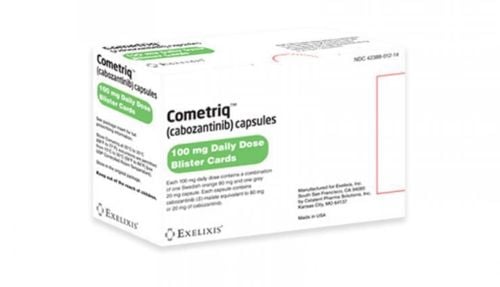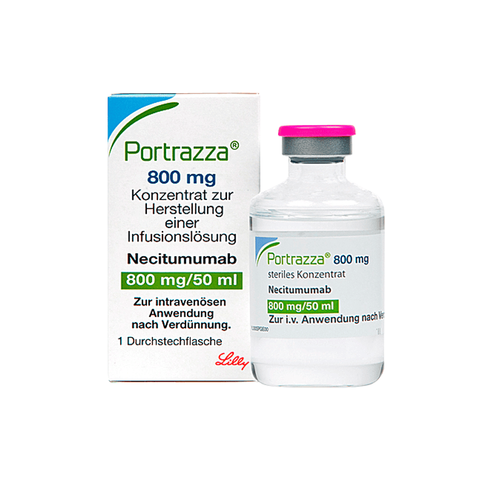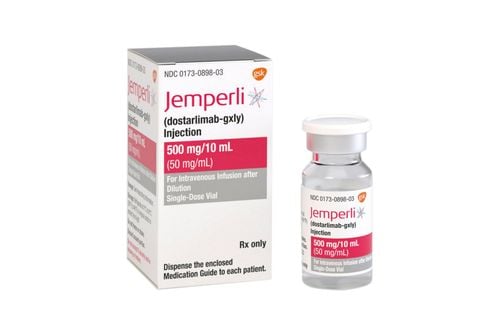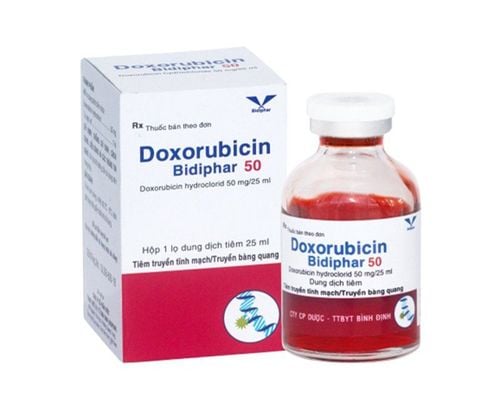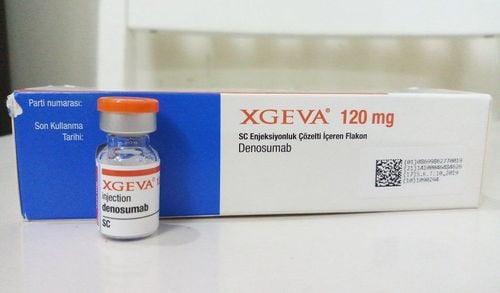This is an automatically translated article.
Zynlonta is used to treat large B-cell lymphoma that has come back or has not responded to previous treatment. The use of Zynlonta is indicated and monitored by a physician experienced in the use of monoclonal antibodies.
1. What is the use of Zynlonta?
Zynlonta drug has the main active ingredient, Loncastuximab tesirine-lpyl, which is prepared in the form of lyophilized powder for intravenous infusion.
Zynlonta is a medicine prescribed and used to treat adults with certain types of large B-cell lymphoma that have come back or have not responded to previous treatment. This medicine is used for people who have received 2 or more cancer treatments that have not worked.
Zynlonta is a monoclonal antibody that is used to target a CD19 protein.
2. How to take Zynlonta
Zynlonta is given to you by healthcare professionals as an intravenous (IV) infusion, which is given into your vein over 30 minutes.
The dose of Zynlonta is usually given every 3 weeks.
Your doctor will prescribe oral medication before each Zynlonta infusion to reduce the risk of side effects. During the use of the drug, you need to be closely monitored by clinical and subclinical regularly. If there is an abnormality due to serious side effects, it may be necessary to stop treatment, delay or change the dosage.
3. Side effects of the drug Zynlonta
Zynlonta may cause side effects including:
Serious side effects:
Fluid retention: When taking this medicine, it can cause the body to retain water. Symptoms of fluid retention may include new or worsening swelling or puffiness, rapid weight gain, chest pain, and shortness of breath. You should tell your doctor about these side effects. Low blood cell counts such as thrombocytopenia, red blood cells, and white blood cells. Low blood cell counts are a common side effect with Zynlonta but can also be serious. If you experience symptoms such as fatigue, dizziness, lightheadedness, fever above 38°C, any bruising or bleeding, tell your doctor right away. Infection: Serious infections can occur, including fatal infections. Tell your doctor if you have new or worsening signs or symptoms of infection, including fever; feeling chills; flu-like symptoms, fatigue or weakness, and body aches; headache; breathing problems; the appearance of a cut or scratch that is red, warm, and painful. Hepatotoxicity: This drug can cause liver toxicity when used. Liver function should be checked regularly using blood tests. Notify your doctor if you notice yellow skin or eyes, pale stools, dark urine, or abdominal pain. Skin reactions: Serious skin reactions have also been reported in people treated with Zynlonta. Tell your doctor if there are signs of a skin reaction, including sensitivity to the sun, rash, peeling, redness, or irritation of the skin. You may be more prone to severe burns or severe sunburn. The most common side effects include: Feeling tired, swelling, nausea, muscle or joint pain. Elevated blood sugar increases your risk of diabetes or makes your diabetes harder to control. This should be monitored with some blood tests and if you have any unusual symptoms such as frequent hunger, increased urination, thirst and weight loss, you should notify your doctor. Zynlonta may also cause fertility problems in men. Before taking it, talk to your doctor about it. These are not all possible Zynlonta side effects. If you have other unusual symptoms you should call your doctor right away.
4. Notes when using Zynlonta
The drug should not be used by people who are sensitive to any ingredient of Zynlonta , who are suffering from serious infections.
Before you start treatment, tell your doctor about all medical conditions, including:
Have or have had a recent infection. There are liver problems. Are pregnant or planning to become pregnant. Zynlonta may harm your unborn baby. For women before treatment, it is necessary to take a pregnancy test and confirm that you are not pregnant. You should use effective birth control during treatment and for 9 months after your last dose of Zynlonta. If you are pregnant or in doubt, tell your doctor while taking this medicine.
For men, you should use effective birth control during treatment and for 6 months after the last dose.
For women who are breast-feeding: It is not known at this time whether Zynlonta passes into breast milk. Therefore, do not breast-feed during treatment with Zynlonta and for 3 months after the last dose.
Due to the risk of serious infection while taking this medicine, you need to avoid contact with sources of infection, such as people with colds, measles, chickenpox...
Avoid or limit contact with sunlight, including sunlight through glass (such as in buildings or car windows) and artificial sunlight such as sunlamps. Exposure to sunlight during treatment may cause a skin reaction or rash. Use measures to protect your skin such as sunscreen with an Spf rating above 30 and wear clothing and a wide-brimmed hat that covers your skin when out in the sun.
Interactions with other drugs can occur while taking Zynlonta, so you need to tell your doctor immediately about other medicines you are using.
Above is the information about the use, how to use and note when using Zynlonta medicine. This medicine is to be used under the direction and supervision of an experienced physician. You should inform your doctor of any problems that occur while taking the drug for advice and treatment.
Please dial HOTLINE for more information or register for an appointment HERE. Download MyVinmec app to make appointments faster and to manage your bookings easily.




